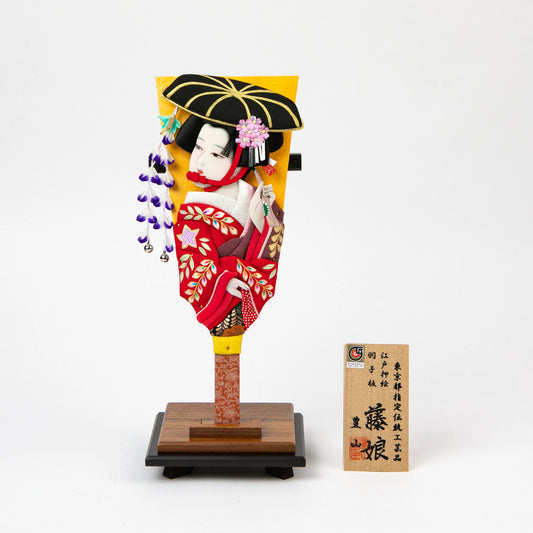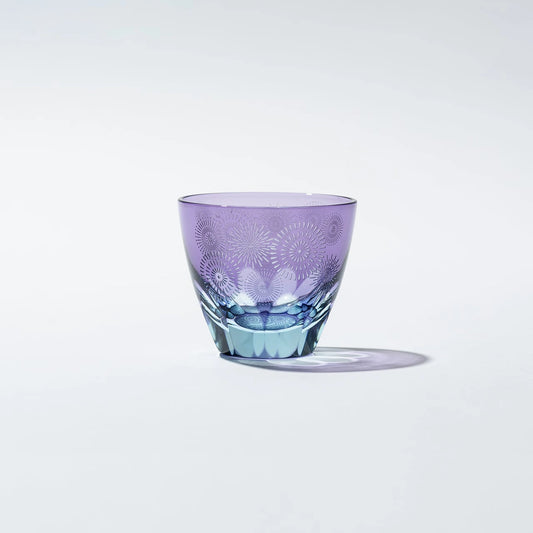Get ready for the most joyous time of the year in Japan! New Year is a magical season filled with precious moments shared with loved ones. The atmosphere is brimming with wishes for happiness, good health, and prosperity in the upcoming year.
In Japan, the New Year is referred to as Oshogatsu. Originally, it referred to the period from January 1st to the 7th, but now it encompasses the first three days of the new year when schools and most offices are closed. Although the passage of time has caused some traditional customs and festivities to fade away, people still uphold numerous traditions to welcome a delightful New Year.
Come along with us as we discover the enchanting ways in which Japan celebrates New Year and gain insight into how this special occasion is cherished within Japanese culture.
Contents
- A Fortunate Beginning: Paving the Way for Good Luck with Kagami Mochi
- First Sunrise Serenity: Embracing the Significance of Hatsu-hinode
- Bite into Tradition: The Rich Symbolism of Osechi Ryori Dishes
- Sensational Sake: A Healthy Herbal Start to The New Year
- New Year Aspirations: The Sacred Practices of Hatsu-mode in Japan
- Scripting Destiny: Japanese Calligraphy as the First Brush Stroke of the Year
- Dragon's Blessing: Unveiling the Mystique of the Year of the Dragon
- In Conclusion
1. A Fortunate Beginning: Paving the Way for Good Luck with Kagami Mochi

As December 28th approaches, it's time to unveil the captivating Kagami mochi, also known as the "mirror rice cake." This culinary masterpiece sets the stage for the upcoming year, drawing its name from a revered bronze mirror of ancient Japan. Kagami mochi consists of two round rice cakes, or mochi, stacked together with a vibrant citrus fruit called daidai.
This exquisite creation takes center stage in households, serving as an offering to Toshigami, the god believed to shower the family with luck in the new year. Once the year begins, the mochi is playfully broken apart using a mallet and transformed into a comforting soup known as ozoni.
Don’t worry if you don’t have access to one - crafting your own homemade Kagami mochi is delightfully easy - just follow these instructions:
- Begin by crafting two round mochi, representing the traditional Japanese rice cake. Mix sweet rice flour with water and steam until achieving a smooth, elastic texture.
- Once the mochi rounds are prepared, let them cool.
- Assemble your Kagami mochi by stacking the two mochi atop each other. Crown it with a citrus fruit, such as a small orange or another smaller citrus variety.
- Showcase your creation prominently at home, offering it to Toshigami, the god associated with bestowing luck on the family for the New Year.
Why not display your creation on this wonderful Small Blue Sea Wave Patterned Square Plate from M. M. Yoshihashi?
2. First Sunrise Serenity: Embracing the Significance of Hatsu-hinode

Hatsu-hinode marks the first sunrise of the year, holds immense significance. It is believed that during this sacred moment, the deity of the new year makes an appearance, showering households with happiness and prosperity. To embrace this auspicious occasion, numerous individuals embark on pilgrimages to specific locations where they can witness the enchanting sight of the first light.
Some daredevils opt to conquer towering peaks like Mt. Fuji, while others opt for early morning flights, all in pursuit of capturing the mesmerizing beauty of the new year's inaugural sunrise.
3. Bite into Tradition: The Rich Symbolism of Osechi Ryori Dishes

Let us next introduce you to Osechi Ryori, a feast for the senses during the New Year festivities. As the year comes to a close, families would gather in their kitchens to create a magnificent spread of dishes, carefully arranged in a Jubako bento box. This was a practical solution, as many stores were closed during the festive season. The beauty of Osechi Ryori lies in its longevity, as it was meant to last for three days, allowing everyone to savor the holiday spirit without the hassle of cooking.
Each dish in the Osechi Ryori is thoughtfully crafted to embody auspicious blessings, making it a truly special culinary experience. Some of the most common dishes include:
- Kuromame (Black Beans): Symbolizes diligence and hard work for a prosperous year.
- Kamaboko (Fish Cake): Represents the rising sun and the changing of the year.
- Datemaki (Sweet Rolled Omelet): Signifies scholarly achievement and a desire for success.
- Kazunoko (Herring Roe): Symbolizes fertility and the hope for many descendants.
- Tazukuri (Candied Sardines): Represents a bountiful harvest and prosperity.
- Ebi (Shrimp): Signifies longevity and a wish for a long, healthy life.
- Kohaku Namasu (Pickled Daikon and Carrots): Symbolizes happiness and celebration, with the red and white colors representing good luck.
- Nishime (Simmered Vegetables): Signifies well-wishing for a harmonious and peaceful year.
- Ozoni (Mochi Soup): Traditional soup containing rice cakes, symbolizing unity and family safety.
After Indulging in the delightful Osechi Ryori feast, you can tuck into the accompanying unique soup known as ozoni, served in a beautifully crafted lacquerware soup bowl. While the recipe for ozoni may vary, one ingredient that remains constant is the delightful "mochi."

This cherished custom of ozoni traces its roots back to grateful farmers who expressed their appreciation to the gods for a prosperous harvest in the past year, while also seeking blessings for a fruitful year ahead, filled with abundance and the safety of their loved ones.
4. Sensational Sake: A Healthy Herbal Start to The New Year

As the family gathers around the table, a cherished tradition unfolds - the indulgence in otoso. This enchanting herbal liqueur is meticulously crafted by immersing a medley of 5 to 10 medicinal herbs in either sake or mirin. With the arrival of New Year's Day, as the morning sun casts its gentle glow, the family comes together to sip otoso, warding off any lurking malevolent spirits and fervently praying for good health. Commencing this sacred ritual, it is the youngest member of the household who takes the inaugural sip from the elegant "Sakazuki" sake cup, setting the tone for a year filled with blessings and prosperity.
If you want to partake in something similar and keep a traditional festive feel, we’d recommend this Katakuchi Sake Pourer and Kara-nuri Sake Cup by Kobayashi Lacquerware for to make those sips extra special.
5. New Year Aspirations: The Sacred Practices of Hatsu-mode in Japan

One enduring New Year's tradition that continues to be widely practiced is the custom of visiting shrines and temples. This customary visit, known as Hatsu-mode, signifies the first visit to a shrine or temple in the new year. For some individuals, this is the sole occasion throughout the entire year when they don a kimono to pay their respects to the deities at these sacred places. During Hatsu-mode, people express their gratitude for the past year and extend their wishes for good health, happiness, and prosperity in the coming year.
After conveying their wishes, many individuals seek their fortune for the new year through the means of an omikuji, a piece of paper that reveals their future fortune. This omikuji not only reveals whether one's luck will be good or bad, but it also provides detailed advice and suggestions regarding health, work, and relationships.

Omikuji can be found at numerous temples and shrines throughout the year, so when you plan your next visit to Japan, why not try your luck with an omikuji?
6. Scripting Destiny: Japanese Calligraphy as the First Brush Stroke of the Year

Kakizome, a beautiful Japanese tradition, involves writing letters in calligraphy during the New Year's holiday. It's a delightful custom to pen down words that express New Year's resolutions or four-character idioms that wish for good health and happiness.
While this tradition may not be as widely practiced at home nowadays, it still holds its significance in Japanese elementary schools. In fact, many students are assigned kakizome as homework during the winter break, keeping the tradition alive and flourishing.
7. Dragon's Blessing: Unveiling the Mystique of the Year of the Dragon

The Juni-shi, or the 12 zodiac signs, hold immense cultural significance in Japan and are frequently incorporated into decorative items. These signs were initially introduced to Japan from ancient China. The zodiac cycle spans 12 years, with each year representing a different animal, starting with the mouse and ending with the boar.
Notably, 2024 will be the Year of the Dragon, a creature symbolizing strength, power, and prosperity. It is believed that this year will be filled with energy and vitality, bringing good fortune to those who embrace the dragon's majestic presence.
In Conclusion
The wish for a joyous new year resonates universally. Across the globe, people partake in various festivities, all centered around the shared desire for peace and happiness in the coming year. Japan, too, embraces this beautiful tradition as families and loved ones gather, cherishing moments of pure joy and excitement, as they eagerly embrace the arrival of a fresh new year.
We at omakase sincerely wish you all a Happy New Year in 2024, with all the wishes of good health, wealth and fortune included.
Thank you for making this year so special for us and we hope to continue serving you all in the coming years!


















